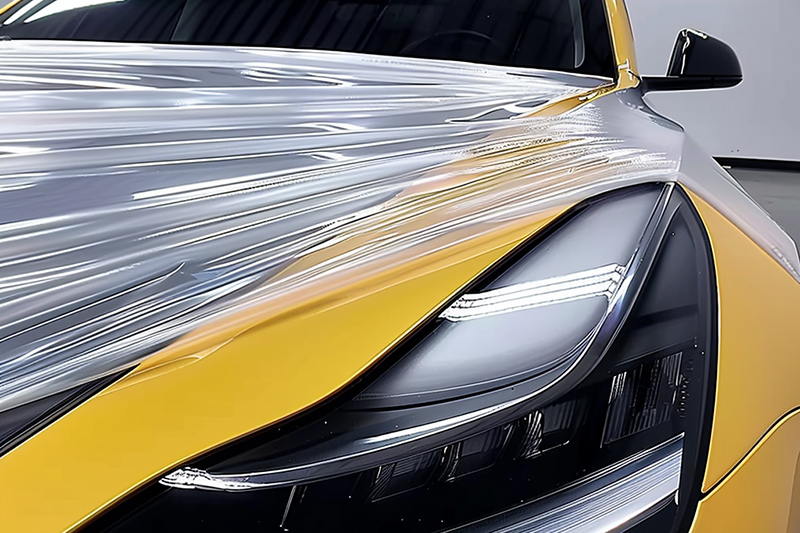Paint Protection Film: A Comprehensive Guide for Car Enthusiasts
For car enthusiasts, a pristine paint job is a source of immense pride. It reflects the care and attention poured into your vehicle, making it stand out from the crowd. But the reality of road hazards and environmental elements constantly threatens that perfect finish. This is where Paint Protection Film (PPF) comes in – a near-invisible shield that safeguards your car's paint from a multitude of threats.

What is Paint Protection Film (PPF)?
PPF, also known as clear bra, is a transparent urethane film applied directly to the painted surfaces of your car. It acts as a sacrificial barrier, absorbing scratches, chips, and stains that would otherwise damage the original paint. Made from high-quality polyurethane, PPF is:
Highly durable: It can withstand impacts from rocks, debris, and minor scrapes.
Self-healing: Certain PPF films possess a self-healing top coat that can mend minor scratches with exposure to heat.
Stain resistant: It shields your paint from bird droppings, insect splatter, and other environmental contaminants.
Optically clear: High-quality PPF is virtually invisible, preserving the original look and shine of your car's paint.
Hydrophobic: Some PPF films repel water, making them easier to clean and maintain.
Benefits of PPF for Car Enthusiasts:
Preserves Paint Value: By preventing scratches, chips, and fading, PPF helps maintain your car's paint in pristine condition, maximizing its resale value.
Enhanced Aesthetics: High-quality PPF provides a glossy finish, often even exceeding the shine of your car's original paint.
Long-lasting Protection: PPF can last for several years with proper care, offering extended protection for your investment.
Peace of Mind: Knowing your car's paint is shielded from everyday wear and tear allows you to enjoy the driving experience with greater peace of mind.
Protects Specific Areas: You can choose to have PPF applied to your entire car or focus on high-impact zones like the hood, front bumper, fenders, and side mirrors.
Types of Paint Protection Film:
There are two main types of PPF available:
Polyurethane (PU): The most common type, offering excellent protection and durability.
Thermoplastic Polyurethane (TPU): Provides similar protection to PU films but with a softer, more scratch-resistant surface. However, TPU films may have a slightly less glossy finish.
Factors to Consider When Choosing PPF:
Budget: PPF prices can vary depending on the film's quality, coverage area, and installation labor.
Desired Protection Level: Consider the type of driving you do and the level of protection you need.
Durability: Choose a film with a lifespan that aligns with your ownership timeline.
Self-Healing Properties: If minor scratch repair is important to you, prioritize a film with self-healing capabilities.
Warranty: Opt for a film with a good warranty to ensure coverage for any potential defects.
Installation of Paint Protection Film:
Professional installation is highly recommended for PPF. A skilled installer will ensure a flawless, bubble-free finish that adheres perfectly to your car's contours.
Maintaining Your PPF:
Wash your car regularly using a gentle car wash soap and a soft microfiber cloth.
Avoid harsh chemicals and abrasive cleaners.
Apply a UV protectant to the film periodically to maintain its lifespan.
Paint Protection Film: A Wise Investment for Car Enthusiasts
For car enthusiasts who value their vehicle's appearance and long-term value, PPF is a wise investment. It offers a virtually invisible shield against the elements, preserving the showroom shine and protecting your car's paint from the inevitable wear and tear of the road. By understanding the benefits, types, and considerations involved, you can make an informed decision about whether PPF is the right choice for your beloved car.
